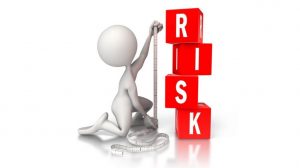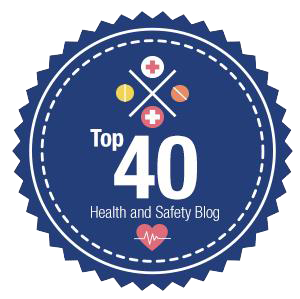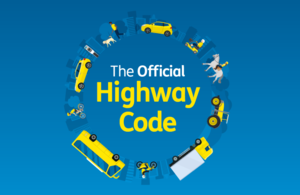 Following a consultation on proposed changes, the Department for Transport (DfT) has announced that the Highway Code will get a major revision on 29 January 2022. Here, we look at the main rule changes and what they mean for professional drivers.
Following a consultation on proposed changes, the Department for Transport (DfT) has announced that the Highway Code will get a major revision on 29 January 2022. Here, we look at the main rule changes and what they mean for professional drivers.
Rule H1: Hierarchy of road users
The most significant change is the decision to introduce a hierarchy of road users. This states that, in any interaction between users, those who can cause the greatest harm have the greatest responsibility to reduce the danger or threat they pose to others. The DfT points out that the road users most likely to be injured in the event of a collision are pedestrians, in particular children, older adults and disabled people, followed by cyclists, horse riders and motorcyclists.
Introducing new Rule H1, the Code states: “The objective of the hierarchy is not to give priority to pedestrians, cyclists and horse riders in every situation, but rather to ensure a more mutually respectful and considerate culture of safe and effective road use that benefits all users.”
However, while the DfT makes clear that cyclists, horse riders and horse-drawn vehicles all have a responsibility to reduce danger to pedestrians, the hierarchy principle puts most responsibility on the drivers of large goods and passenger vehicles, followed by vans/minibuses, cars/taxis and motorcycles.
Reacting to the proposals, Stephen Edwards of the Living Streets charity said: “The Highway Code currently treats children walking to school and lorry drivers as if they are equally responsible for their own or other people’s safety. These changes will redress that balance.”
Rule H2: Pedestrian priority
The second major change to the Code aims to clarify existing rules on pedestrian priority on pavements and to emphasise that drivers and riders should give way to pedestrians crossing or waiting to cross the road. The new Rule H2 will create clearer and stronger priorities for pedestrians, particularly at junctions, and clarify where they have right of way. It will introduce a responsibility for drivers and riders to give way to pedestrians waiting to cross a side road, junction or zebra crossing.
In turn, pedestrians are reminded that they share some routes with cyclists and horse riders and, while these riders should respect the safety of pedestrians, those on foot must also take care not to obstruct these other road users unnecessarily.
Rule H3: Guidance for cyclists
The Code now places a requirement on drivers to give priority to cyclists when they are turning into or out of a junction, or changing direction or lane, just as they would to other motor vehicles. As it is proposing to provide strengthened guidance to ensure safe cycling, the DfT notes that there is considerable new text within the “Rules for cyclists” chapter.
Rule H3 now tells cyclists that, if they are going straight ahead at a junction, they have priority over traffic waiting to turn into or out of the side road, unless road signs or markings indicate otherwise. Cyclists are also reminded of the need to be particularly careful alongside lorries and other long vehicles, as they may not be visible to the drivers. Such vehicles may have to move over to the right before turning left, and their rear wheels may then come very close to the kerb while turning.
Cyclists should ride in single file when drivers wish to overtake and it is safe to let them do so, the Code goes on. When riding in larger groups on narrow lanes, it recognises that it is sometimes safer to ride two abreast. In addition, they must take care when passing parked vehicles, leaving enough room (a door’s width or 0.5 metres) to avoid being hit if a door opens unexpectedly and they have a responsibility to make sure it is safe before moving away from the kerb, when pulling out to overtake or to pass stationary vehicles, or when turning at junctions or stopping. “When the traffic lights are red,” the Code states, “you may cross the first stop line, but you MUST NOT cross the final stop line.”
Passing distances
One part of the consultation which produced a mixed response was the proposal on passing distances (Rule 163) detailed when overtaking motorcyclists, cyclists, horse riders and horse-drawn vehicles. Some respondents thought that two metres was too large a gap for overtaking cyclists or horse riders and would prevent drivers from overtaking on many country roads, leading to frustration and non-compliance. Conversely, feedback also suggested that two metres is not a sufficient passing distance and space should be allowed in case a cyclist were to fall. Generally, it was thought that the rule is too complicated and a safe passing distance of two metres in all cases would avoid confusion. Drivers should therefore leave a distance of at least 1.5m when overtaking such road users.
Horse riders
As an example of the way the Code makes plain everyone’s responsibility for safety on the roads, the “Rules about animals” chapter will be updated to suggest that those new to horse riding, or those who have not ridden for a while, should consider a training course and taking the Ride Safe Award from the British Horse Society. However, there was some objection to this proposal with some respondents arguing that it discriminates against horse riders by putting the onus on them to take training when it is other road users that are the problem and the cause of accidents.
Those who disagreed with the change were concerned that lack of training might be used as a driver’s defence in the event of collisions or used unfavourably in any insurance claim, particularly as horses can be unpredictable and training will not necessarily prevent this.
The changes are not new legislation
Feedback to the consultation generally suggested that there should be more emphasis on the extra care required when overtaking horses and horse-drawn vehicles, and at junctions. The DfT noted a feeling that too much priority is being given to cyclists and not enough emphasis on cyclist responsibility for their own safety.
Emphasising that the changes are advisory and not legislative, it said: “The new rule to give priority to cyclists going straight ahead does not seek to change the law but rather to ensure a more mutually respectful and considerate culture of safe and effective road use that benefits all users. You should not cut across a cyclist just like you would not cut across another motorist.”
Contact us if you require further information.
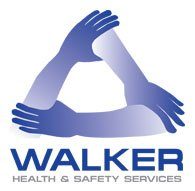



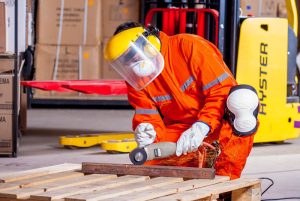
 Following a consultation on proposed changes, the Department for Transport (DfT) has announced that the Highway Code will get a major revision on 29 January 2022. Here, we look at the main rule changes and what they mean for professional drivers.
Following a consultation on proposed changes, the Department for Transport (DfT) has announced that the Highway Code will get a major revision on 29 January 2022. Here, we look at the main rule changes and what they mean for professional drivers.
